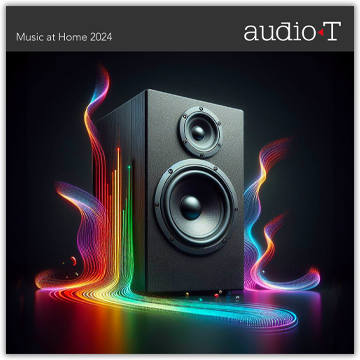Modern Hi-Fi 101 - A beginners’ guide exploring the Basics of Hi-Fi Setups in 2024
/For many of us, investing in a good quality home Hi-Fi system has become more challenging than ever in the current financial climate. However the desire for a form of escapism or the pure enjoyment of sitting down and immersing yourself in music is still very much prevalent and maybe even more important than before.
Whether it’s winding down after a long day of work or hosting friends whilst enjoying memorable albums together, having a system that brings out a rich and captivating sound is the whole purpose of a Hi-Fi system. Bringing the listener closer to the original performance.
Below I will be discussing the considerations to be had when looking for an up-to-date Hi-FI system, and for those worried about breaking the bank!
Whether you’re looking to start your journey in high-fidelity sound by building a complete setup, or looking to bring new life to a much loved existing system and replace outdated components with a better understanding of current options; hopefully this post will help you in making some decisions without compromising on quality.
Rega Brio, Acoustic Energy AE320, Wiim Pro+, Rega Planar 3, IsoAcoustics Zezen I
The sound is as good as your worst component
The main 3 components in most traditional Hi-Fi systems include Source, Amplification and Speakers.
When building a complete system there are a number of decisions to make. Firstly, a Hi-Fi system can be a ready to play, all-in-one system whereby you only need to add a pair of speakers (if not already built in). These are easy to set up and use but are often limited in terms of upgrade options.
On the other hand, ‘separate’ systems consist of a multitude of components used together (from the same or different brands). Here the variables for consideration are much greater, but when done right they provide a better result, as each component serves its own purpose at a higher quality of performance.
With all systems you should try and aim to match the performance and quality of each component fairly evenly, by that meaning there aren’t significant performance differences between all the equipment. Having an amazing set of speakers is going to be wasted if only driving them with a low quality amp and vice-versa. Similarly, a great amp and speaker combo is going to be greatly limited by a poor source of music such as a sub-par CD player or turntable. Therefore leveling the standard in some areas to improve the quality elsewhere is sometimes the key in getting the most potential out of a system on a fixed budget.
Source:
The source is where the music begins and the start of the chain. Whether it’s a CD Player, a Turntable, Network Streamer, Radio or TV audio, it’s the device where you choose what is to be played. The considerations include thinking about how you interact with music in your daily life. Do you listen to singles & albums that you know very well, or prefer curated playlists and the ability to explore new music or simply wish to tune in to your favourite radio station?
As we know, CDs and vinyl records are a physical format, which means you are limited to listening to the music in your own collection. Whereas online streaming offers a completely different musical experience, in that potentially you have access to a whole world of artists and albums.
Streaming comes in many guises. The most pedestrian way of course is done via Bluetooth, connecting directly from your phone to your bluetooth speaker, car stereo, or perhaps an amplifier or microsystem with bluetooth capability. Whilst convenient, Bluetooth has its drawbacks. In order to enable the digital data to be transmitted from one device to another, Bluetooth relies on SBC (low complexity subband coding) compressing your music, resulting in less detail being heard.
Streaming options: Sonos Port, Wiim Pro+, Bluesound Node & Node X, Arcam Radia ST5, Naim Atom
Alternatively, the more favoured method in the hi-fi community is the use of a dedicated device called a streamer, which will provide a far greater quality of music reproduction compared to what Bluetooth is capable of. A streamer functions by directly connecting to the internet via an ethernet connection or WiFi, and is normally controlled by a smart device such as your phone or tablet, often with a dedicated app. Many modern streamers will also have seamless integration between the most common music and audio applications. Look out for applications such as Qobuz or Tidal connect, to provide you with music using your home device at the highest quality.
The Power:
The most fundamental purpose of an amplifier is, unsurprisingly, to amplify the low-level audio signals and ensure that the signal has enough power to drive the speakers. Amplifiers come in various shapes and sizes as well as a multitude of price points, characteristics and features.
Intergrated Amplifiers: Rega Brio, Arcam A15, Marantz Model 40n
Integrated amplifiers have two main stages; Pre and Power. The “Pre” stage is designed to raise the signal level of your source, the “Power” is the part that drives the speakers. Integrated amplifiers can do both jobs well within one unit, and can prove to be more cost-effective, which is crucial at entry and mid-level price points.
As mentioned previously, separating components within the audio signal path can produce dramatic improvements in performance. This is the same with amplification by separating the Pre and Power stages into two units.
Some amplifiers have additional features, such as built-in Bluetooth connectivity for phones and tablets, headphone outputs, TV inputs (HDMI), phono stage inputs for turntables, built-in DACs, balanced XLR inputs, room correction & EQ settings, remote control and app integration.
As mentioned at the start of the article, you then have what are called all-in-one systems. These can range from basic, entry-level units like the Denon DM41 and move all the way up to greater levels of fidelity with the Naim Uniti Nova.
Most, if not all hi-fi amplifiers will focus primarily on getting the best out of a 2-channel system, so for any sort of surround sound with multiple speaker layouts such as 5.1 or 7.1 and beyond requires an AV amplifier to drive the additional speakers and have further video capabilities, but that’s perhaps a conversation for another blog…
A Hi-Fi amplifier needs to have an appropriate power output (rated in watts per channel). This indicates the maximum continuous power that the amplifier can deliver into a specific load impedance. Ideally, the amplifier's power output should fall within the range of the speaker's power handling capacity. Although this is not black and white, it is generally recommended to choose an amplifier that can deliver power slightly higher than the speaker's RMS power rating to ensure adequate headroom and avoid clipping or distortion. Most speakers have a nominal impedance of 4, 6, or 8 ohms. The amplifier should be rated for the same impedance or be compatible with the range of speaker impedances.
Finally, the characteristics of an amp will be defined by the components used, the type of circuitry as well as the amplification class. Each amplifier design has its own set of characteristics, advantages, and trade-offs, and the choice of amplifier design depends on factors such as application requirements, power efficiency, and desired audio quality. Once again, try and compare the characteristics of a few amps and how they interact with a number of speakers. Some amps will sound much cleaner, sharper and brighter in the high frequencies, whilst others can be more balanced or attenuated towards a warmer mid and low section. The soundstage and overall tonality and performance of a speaker is defined by the amp, and therefore crucial to get right.
The Speakers:
Last but not least, we have loudspeakers. As just mentioned, they need to be compatible with the amp’s output, although many amplifiers in today’s market are pretty versatile and will drive a wide range of speakers to a decent level with impedance matching abilities.
The speaker choice should focus on a range of factors such as the sound signature of the speaker, room size and acoustics, driver configuration and frequency response as well as the build quality and aesthetics.
Speakers: Sonus Faber Sonetto 1, Acoustic Energy AE320, ProAc Response DT8
Consider the sonic characteristics of the speakers and how they complement your listening preferences. Different speakers have varying tonal qualities, such as warm, neutral, or bright sound signatures. Choose speakers that align with your musical taste and desired sound profile.
Take into account the size and acoustic properties of your listening room when selecting speakers. Larger rooms may benefit from floor-standing speakers with greater bass extension, while smaller rooms may require bookshelf or stand-mounted speakers for optimal imaging and placement flexibility.
Pay attention to the speaker's driver configuration, including the number and type of drivers (e.g., woofers, tweeters, midrange drivers). Speakers with a balanced frequency response across the audible spectrum can reproduce a wide range of musical genres with accuracy and clarity.
Take extra care with proper speaker placement, including positioning relative to walls, corners, and listening positions. This can significantly impact sound quality and imaging.
Lastly evaluate the build quality, design and finish, once again choose something that not only sounds great but can integrate into your listening space or even enhance it visually.
All in all…
As with all of the things mentioned above it is good to evaluate the specifications and read reviews on the individual items, but it’s the correlation between all elements that create the full sound experience. Book in a demo at any of the Audio T branches and evaluate the performance yourself as every individual / staff / reviewer will have their own perception of what sounds good and what is an immersive and captivating sound experience.
Now with some of the key concepts discussed when building a modern Hi-Fi system, you should have a clearer idea of what to look for when building your own set up.
In the next month’s blog we will be taking some of the key concepts discussed here and exploring what is currently available in the Hi-Fi market, looking at products that offer best value for money. We will be sharing Audio T staff’s favourite picks for complete 2024 HiFi setups for under £2,500.
Thanks for reading!
Dan & Andy - Audio-T Swindon
If you have any questions about any of the equipment featured in this article, or any other Hi-Fi or home cinema enquiries, be sure to Contact Us.
If you’ve enjoyed this, why not go ahead and read some more of our other blogs, and be sure to follow us on our social media channels below…
Speak to our experienced team members for any audio advice or book in an appointment with your local Audio-T store













